
Just Takes
Welcome to "Just Takes," our Op-Ed/thought piece/writing initiative at the Institute for the Study of Global Racial Justice. We encourage our affiliated-faculty and Rutgers Researchers on Race to submit pieces of writing of 500 words or less pitched to orient their research towards a more public audience and/or as relevant for a current issue in the broad area of global racial justice.
Interested in submitting an entry?
Please complete the submission form below to add your thought piece to our "Just Takes" page!
Black Women are STILL Winning – A Much-Needed {Self}-Affirmation
by Hyacinth Miller, Assistant Teaching Professor, Department of Africana Studies and the Department of Political Science, Rutgers University-Newark
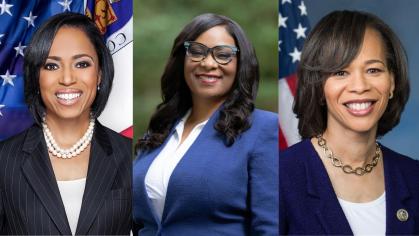
On November 5th, 2024, the world waited with collective bated breath to see if, at long last, United States citizens would…could…elect an accomplished, competent, relatively young, joyous Jamerican Desi woman as president. The answer was no.
Political wonks have shared their post-election analyses about why Vice President Harris may have lost the nomination [including me]. The critiques include an elitist message, a platform that inadequately addressed the economy and immigration--the two most salient issues to American voters--, and that she did not do enough in her 107-day campaign [which raised a historic one billion dollars] to convince voters to trust her vision. Collecting and properly dissecting the November electoral data will take some time. Still, 92% of Black women voted for Vice President Harris to become the 47th president of the United States – 92% out of 100%. It would be an understatement to say that many Black women voters are flummoxed, angry, exhausted, and crestfallen. As a result, many of us have decided to take some time to focus on self-care and community.
Despite the Harris outcome, Black women are still winning.
United States
For the first time in the country’s 248-year history, two Black women, County Executive Angela Alsobrooks and Congresswoman Lisa Blunt Rochester, will serve together in the United States Senate. With their victory, the number of Black women Senators to have served in the U.S. increases to five. In addition, Representative-elect Janelle Bynum will become Oregon’s first Black woman elected to Congress – flipping the seat from R to D. The Garden State - New Jersey - now has two Black Congresswomen - more than New York and Texas - who will serve alongside the state’s other historic firsts. These victories are not the only ones.
Jamaican-born Winsome Sears, Virginia’s current Lt Governor, has launched her campaign to become Virginia’s and the nation’s first Black woman governor. Meanwhile, Alyia Gaskins will become Alexandria, Virginia’s first Black woman Mayor.
Beyond the United States
On the African continent, Namibia’s Vice President Netumbo Nandi-Ndaitwah will become the country’s and region’s first woman president. She joins Presidents Dogbé [Togo] and Hassan [Tanzania] on the Continent. In Latin America, Francia Márquez proudly serves as Colombia’s first Black woman Vice President, following Costa Rica’s former Vice President Campbell Barr, Costa Rica’s first African-descended Vice President. In Pakistan Tanzeela Qambrani, of the African-descended Sheedi community, was recently elected to the Provincial Assembly. In the U.K., Olukemi “Kemi” Badenoch, the new leader of the opposition party—the Tories—is positioned to become the first Black woman Prime Minister of the UK should the Tories regain government control. And in the Caribbean, Barbados Prime Minister Mia Amor Mottley, affectionately known as the Caribbean’s Prime Minister, is rumored to become the next UN Secretary-General.
As we close the year, I wanted to remind everyone [me] that Black women continue to break barriers within and outside of the U.S. The work continues.

Sowing the Seeds of Justice: Cultivating Global Racial Justice Change with Reparatory Action
by Michael Conteh, Ph.D., Postdoctoral Associate in Public Policy and Administration, Rutgers University–Camden
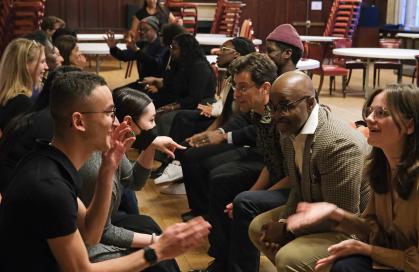
In our movement for Global Racial Justice, the discussion of reparations emerges not as a whisper but as a resounding call to justice, echoing through history and into the heart of modern society. While reparation causes discomfort in some segments of society, we must continue to say the word. This thought piece is inspired by community dialogues in Newark held under the project of crafting democratic futures to research the local history of racial harms and propose reparative solutions, as well as Hunter's "Radical Reparation" and Olufemi Taiwo's work on "Reconsidering Reparations." It aims to contribute to the global discourse on reparations, inspiring a solid and sustained commitment to actionable change to our collective moral and pragmatic considerations and guiding us toward a world that fully recognizes and addresses historical racial injustices.
Expanding the Global Narrative on Reparations
Olufemi Taiwo urges us to reconsider reparations, calling for a comprehensive overhaul of systemic inequities rooted in colonialism and slavery. This viewpoint encourages us to think of reparations as more than financial compensation; it is a multifaceted effort to correct historical wrongs and dismantle the structures perpetuating racial injustice. We must use media platforms to amplify diverse voices and stories to shift the global narrative, highlighting the interconnectedness of historical injustices and current inequalities. During my recent ISGRJ-sponsored visit to Scotland, hosted by the University of Glasgow's Beniba Center for Slavery Studies, I had an excellent exchange of ideas with faculty, students, and museum curators all doing admirable work on reparative justice, demonstrating the global nature of the reparation’s movement. Moreover, our interactions foster a better understanding of reparations as a cornerstone of global racial justice.
Increasing Legislative Support for Reparations
Hunter's groundbreaking framework for reparatory justice emphasizes the significance of grassroots movements and cultural shifts in recognizing historical injustices. By combining Hunter's strategies with engaging storytelling and digital activism, we can cultivate enthusiasm and dedication to reparations. Such public pressure should be backed up by legislative support and policy for reparations by creating a narrative that frames reparations as an essential step toward healing and justice. A coalition of global activists, academics, and policymakers is critical to present compelling evidence of the long-term effects of colonialism and slavery, as well as the development of a viable reparation framework that addresses economic, educational, and health disparities.
A Clarion Call to Action.
The call for reparations is more than just a plea for justice; it affirms our shared humanity and a pledge to create a more equitable world. Drawing on global collaboration on racial justice, ongoing community dialogues, and the insightful works of Hunter and Taiwo, we are reminded that the path to racial justice is both a moral imperative and a pragmatic endeavor. We must redouble our efforts and issue a clear call to action from legislators to support the cause of reparations and actively participate in shaping a just and inclusive society. Let us move forward with passion and unwavering commitment, knowing we can make a difference when working together.
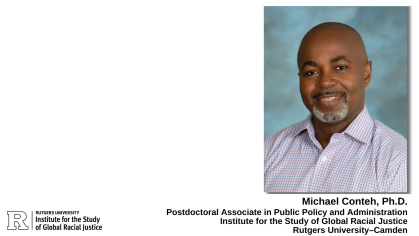

I heard once that we began with water, that we were birthed by water. And while my specific memories of water began with play, with water balloons, muddy puddles, garden hoses, and summers swimming in neighborhood lakes, my connection to water, much like many of our histories, began with the ocean. The history and brutality of the Middle Passage flow through my veins. It is the constant and persistent echo of my ancestors. As a Black woman, or, as I am categorized in the United States, an African American woman, I recognize my relationship with water, how my parents’ relationship with water–my father grew up near one of the Great Lakes, and my mother grew up near the Savannah River, a port for the Trans-Atlantic slave trade–and how my children’s relationship with water–the two of them growing up near the Atlantic Ocean–have all been framed by this significant moment in our shared histories that many would like to erase, that many have tried to erase. But, much like water, it continues.
Patrick Rosal, a former teacher, mentor, and dear friend shared during a conversation the beauty and necessity of Quilting Water. I was struck and moved by many aspects of the project. But what impacted me the most was the idea of water as memory and its importance beyond just a resource or element, which, of course, are both deeply important, but, specifically, its importance as a source of reflection, of storytelling, of sharing, listening, and witnessing, of remembering. In her essay “The Site of Memory,” Toni Morrison wrote that “all water has a perfect memory and is forever trying to get back to where it was.”
I have many memories of water. I remember it was my father who made sure I knew how to swim, who took me to lakes the color of rust and to pools of chlorinated water and entrusted me with strangers who waited patiently until my sinking became floating and then swimming. Perhaps he did this because he wanted me to learn a way of survival that he had never learned. Like so many Black elders and ancestors, my parents never learned how to swim, but his persistence in ensuring I learned how to navigate water was a gift that I eventually shared with my own children.
I remember a trip to Salobreña, Spain, where I washed my feet in the Mediterranean Sea, a body of water with its own history connected to Black bodies. And I remember a trip to Dakar, Senegal, in particular, to Gorée Island, a port for the Trans-Atlantic slave trade, and a trip that, in many ways, left me broken. Gorée Island is situated on the coast of the Atlantic Ocean. It is a body of water where, on the other side of that same ocean, as a Jersey girl, I have placed every inch of my Black body in its water too many times to count. These trips, in many ways, remind me of what Morrison said about the perfect memory of water and how it constantly tries to return to where it was. Much like water and our histories, connected or otherwise, I hold these memories in my body. I hold Quilting Water as a powerful symbol of the connection between memory and witnessing, the connection between the stories of our ancestors, the cycle of life and death, and a return to our histories. Or, maybe, it’s an honoring of our histories because, after all, we began with water; we were birthed by water. And through this project, we return to it through our sharing, our listening, and our reflecting on its power to shape and echo our cultural and spiritual beliefs, traditions, and identities.

Kids Have Become a Battleground
By Hugo Désiré Benjamin Bujon, Ph.D., ISGRJ Postdoctoral Associate in Africana Studies, Rutgers University–Camden
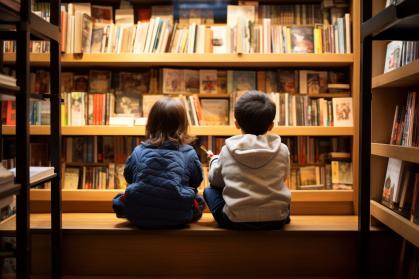
In the last two years, supposedly worried parents have taken it upon themselves to save American children from schools, libraries and books. Teaching about and books on race, American history, trans, queer, gender, sex, etc. would threaten the childhood of these children, their innocence, their purity, their naturalness, their godliness. On conservative television/tv shows, podcasts, radio and social media, parents have heard tales of horror and monstrosity inflicted upon children from 5 to 18 years-old by contemporary teachers and authors alike; the consequence is obvious, children will all hate their country, their body, themselves and their community. The result is foretold: the USA will fall apart, and with it the world. And because it is the end of the world, acts of violence are justified. Facts hardly matter, parents know better. Parents in fact are the only ones who know whatever in regard to their children, and their knowledge is that these institutions threaten their children and their childhood.
In reality, if facts mattered, this situation would not be. Pedagogies, curricula, library collections, like everything else should be critiqued. Effectively, it is not hard to find today dubious pedagogical practices and mediocre books on any subjects, at any level, as has always been the case. But the campaign leveled against schools, libraries, and books, does not rely on facts; at best, circumstantial situations, often little understood, are generalized; at worst pure fabrications are justifications. If one takes the time to look at schools’ collections of child and young adult literature today, it is their complexity, nuance, and precision that is striking, not their apology for a simplistic world-view. Children still learn about the founding fathers or the first colony, but they learn a whole lot more about them than used to be told. Children learn about the human body, but children discover nooks and corners of it that were not previously presented.
The problem has little to do with what children learn, and all to do with how this effort to show fairly and precisely the world and its multiplicity – whatever the short-comings of this effort are – collides with a certain vision of the world that, despite all its denials, has trouble to not sound like a white-supremacist-phallocentric-capitalist-nationalist fantasy whose paradise is located alternatively in 1776, in the antebellum era, or in the 1950’s. The problem lies in what the USA, what the world are. What you imagine the children ought to be is what you imagine the world should be. Because schools and books are places made to inform children, it is easy to regard the purpose schools and books have as bringing the children closer to this ought. Let us protect the future by enforcing our image of our future which is our image of the past. Obviously admitting the place of the concept of race in the American history or the fluidity and diversity of sexuality and gender can only clash with a simplified, when not purely phantasmic, vision of 1776, the antebellum era or the 1950’s.
But in the end, the most telling evidence that this situation is not about children is the fact that the voices of children are absent from this movement meant supposedly to protect them. The parents insist, these children are kids, they do not know what they feel or know or do. To raise a child is to protect them from themselves. This movement rests on this a-priori. And sure, a child needs to learn to look at both ways before crossing the street, and the child can only learn it from someone else or from experience. But who cannot remember how as children our voice was ignored, whereas we had so much to say, because we had already experienced so much? That in fact nobody had? Or was experiencing…. experienced anything as intensely as we did? These alleged kids, be they 5 or 18, are first in line to think about their education, what they want and need; their feelings and desires, their pains and hopes. Like anybody else, they do not have the absolute truth, but freedom of speech extends to them and it is our duty to listen. Instead of that, parents declare children kids, and move on to use children as the site to defend their world-view. In the process, they are turning into a proxy the actual beings that they are supposedly protecting. And so kids have become a battleground.
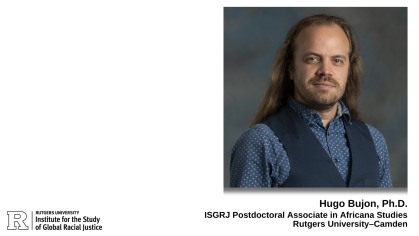
How Does a Historically Majority-Minority City Find Itself Racially and Economically Segregated Midway Through the 20th Century?
by Jermaine Toney, Ph.D., Assistant Professor of Economics, Edward J. Bloustein School of Planning and Public Policy at Rutgers University and ISGRJ Early Career Faculty Fellow

This is the question that Jermaine Toney, Ph.D., James Kelly and Alex Hoffman seek to answer in their working paper “Racial Housing Covenants: The Case of a Southern U.S. City.”
Toney, Kelly and Hoffman focus their research on the city of El Paso, Texas, the 22nd largest city in the US, recognized for its overwhelmingly Hispanic population (89%, US Census 2020). They seek to understand the use of racially-restrictive housing covenants as a tool for sorting by race and socioeconomic status. While substantial research on the topic has been conducted in cities located in the geographic north of the country, considerably less literature exists on those located in the south, specifically in communities where minorities make-up the majority of the population.
In their research, the team uncovered more than 59 property deeds with race or economic restrictive clauses that span more than five decades from the years 1900-1951. In total, the restrictions combined to close off more than two-fifths (45.94%) of the city’s total platted land area at the time.
While Blacks and other racial minorities are the focus of the property-based restrictions and are cast as the so-called “out-group”, the researchers demonstrate how the restrictions still managed to separate the city’s “American White” population from Mexicans through the use of economic restrictions.
Using data from the 1930 Census, which separately counted Mexicans from other White races, they are able to show how the city was very clearly divided racially and how housing played a crucial role in achieving this outcome. While the results are not unlike other cities around the country, the research provides yet another example of how widespread covenants were in the country at this time, and how they were able to be implemented even in communities where Whites were in the minority in the population.
Making homeownership accessible only for those in the “in-group” has major implications including segregating the city, but also limiting the ability of the “out-group” to build wealth. Wealth is the accumulation of assets including homeownership, savings, stocks and bonds, and real estate and is different from income that is earned from employment. Home ownership has historically made up the largest portion of a typical household’s wealth, so racial and economic housing covenants exclude certain people from homeownership and therefore exclude them from the wealth building opportunities that it affords. The restrictive housing covenants that we have seen throughout the country, including in El Paso, Texas, leave a long-standing legacy that shows up in the form of segregated communities, but also in the dramatic racial wealth gap that we continue to see today that has been passed down through generations.
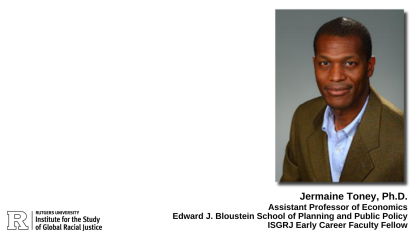
Intersectionality and Structural Gendered Racism: Theoretical Considerations for Black Women, Children, and Families Impacted by Child Protective Services
by Abigail Williams-Butler, Assistant Professor of Social Work, Rutgers University-New Brunswick and ISGRJ Early Career Faculty Fellow
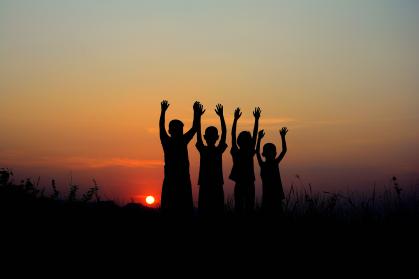
In the United States, 53 percent of Black children are the subject of child maltreatment reports, compared to 37 percent of all children (Kim and colleagues, 2017). Black children are more likely to have higher rates of involvement in later stages of child protective services (Edwards and colleagues, 2021) and are more likely to have negative developmental outcomes compared to White and Hispanic youth who age out of the system (Courtney and colleagues, 2011). The parents of these Black children, who are disproportionately poor, single Black mothers, have historically been characterized as unworthy, unfit, and lacking in the necessary values of traditional motherhood, thus justifying the removal of their children (Bach, 2014; Lens, 2019; Roberts, 1993). Child maltreatment research has rarely paid attention to the framework of intersectionality (Nadan and colleagues, 2015) (the acknowledgement of the multiple identities an individual possesses which influences relationships of power and oppression) (Crenshaw, 1989) in understanding this overrepresentation. Taking into consideration the identities of race, gender, class and the role that each simultaneously play in precipitating this overrepresentation is an understudied topic in the research literature. It is important that practitioners, administrators, and policymakers are aware of the racialized, gendered, and class-based dynamics at play regarding child protective services and how structural gendered racism (the actions of racism and sexism at the structural level shaping race and gender inequalities at the practice and policy level) (Pirtle & Wright, 2021) negatively influence Black women, and as a result, Black children and families within child protective services.
Historically, child protective services were not designed to meet the needs of Black families and were developed in response to the needs of poor and working class White families and European immigrants in the 19th century (Hill, 2004). However, from its inception, child protective services had an interdependent relationship with the carceral state as its initial goal was to punish parents deemed unfit by using the power of the law to inflict state-led punishment (Antler & Antler, 1979). This interdependent relationship later formed the foundation for the overrepresentation of the Black families and children within child protective services (Kelly, 2021). In the literature, racial disproportionality regarding child maltreatment often focuses on the causes and consequences of involvement for Black children and often minimizes or ignores the impact of this involvement for Black women, the mothers of these children, who are disproportionately surveilled based on biases related to race, gender, and class.
Racism, sexism, and classism work together to disproportionately punish Black mothers via state-sanctioned regulatory control. It is important that child protective services practitioners, administrators, and policymakers are aware of these issues. While Dorothy Roberts has addressed these issues for decades (2002, 2012, 2014, 2022), it is important that clinicians and practitioners become more actively engaged in acknowledging how intersectionality and structural gendered racism influence the disproportionate contact of Black women and their children within child protective services and work toward policy and practice interventions to improve their overall well-being. Understanding the interlocking and simultaneous oppression that racism, sexism, and classism play and the power and privilege dynamics related to clients’ and workers identities is important in informing practice, policy, and organizational change.
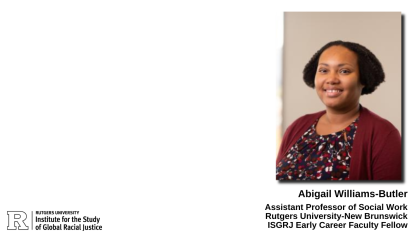
Professor Williams-Butler will be presenting at the Dakar Translation Symposium Accra Edition: Africa and her Globalization in Ghana this June on a paper currently under review with the International Journal of Social Welfare focusing on the well-being of Black women and girls in Ghana and the United States:
Understanding the oppression of Black girls and women within the global context: Illustrations from Ghana and the United States. International Journal of Social Welfare. Williams-Butler, A., Nartey, P., Farmer, A. Hervie, V.M., & Naami, A. (Under Review).
Abstract:
Throughout sub-Saharan Africa and the African diaspora, there is documented oppression of young girls and women. While many policies and laws have been created to improve the well-being of this population, many of them are ineffective, oftentimes due to harmful cultural practices enshrined by systems of oppression. This paper uses intersectionality to explore the unique oppression that young girls and women in sub-Saharan Africa and the African diaspora experience. Specific cultural practices and policies will be analyzed using Ghana and the United States as case examples. In Ghana, we explore the Trokosi system as a cultural practice which causes undue harm to young girls and women. In the United States, we explore the child welfare system, which disproportionately causes undue harm to Black girls and Black mothers of the children within this system. Similarities and differences related to the underlying oppression of both groups is explored in-depth.
______
After the The Dakar Translation Symposium Accra Edition: Africa and Her Globalization conference, Professor Williams-Butler will be staying in Ghana for the entirety of the month of June working with colleagues at the University of Ghana doing guest lectures and meeting with community organizations in preparation for a Fulbright submission. She will wrap up the month of June in completing a writing retreat in Ghana on behalf of the Society for Social Work Research's Special Interest Group focusing on the Well-Being of Black Women and Girls.